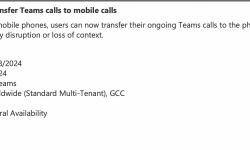Self-service has become commonplace, whether it's used to boost customer satisfaction, employee engagement, or both. Customers (and employees) have begun to demand a better experience when it comes to servicing and issue resolution as the move to a hybrid working paradigm has progressed slowly but steadily. Self-service automation has been the most typical shift in technology function burden for three years in a row, according to The Hackett Group's 2022 Key Issues Study. Both the blended workforce and the engage-from-anywhere approach are examples of this. This is supported by statistics from the 2020 report, which shows that today's virtual assistant and chatbot deployments (at 67 percent) are on the rise (at 48 percent ).
Self-service will serve as one of the catalysts for many firms trying to expedite their digital transformation. Let's look at some of the issues that can arise while adopting self-service for your staff and how to overcome them.
🟩Raising awareness of the problem
Surprisingly, when employees have a problem, they don't know where to look. Message an IT agent or submit a ticket is the preferable method. This basically boils down to a failure to communicate the presence of a solution in a clear and consistent manner. Instead of using a self-service portal, most employees would prefer to speak with someone directly. Despite the fact that it contains solutions to the most prevalent difficulties.
What's the best way to deal with this?
It's critical to not only deliver a beautiful answer to employees' concerns, but also to put it where they can see it. An internal marketing campaign promoting the availability of a self-service option is a no-brainer strategy. Users can enjoy the use of the self-service concept through live sessions with a Q&A segment or even demo recordings. End-users should be empowered with self-service portals. They should be able to raise tickets independently and track their progress. Having internal change champions among your own employees, spread across business areas, helps to build trust in the process and enhances user adoption rates among their peers.
🟩Getting in front of users where they are
When compared to just a few years ago, today's self-service is far more individualized. Employees expect the same degree of happiness at work as they do at home, thanks to increased awareness and attention in consumer self-service. Employees also don't want to waste time reading through pages of help materials. It might lead to a decrease in production and morale.
What's the best way to deal with this?
Taking the solution to the employees is one of the simplest methods to get them to adopt the self-service approach. This entails making self-service information available to people wherever they are. Any internal communication platform, such as Microsoft Teams, is an example. Using a virtual agent to deal with your employees frees up time for your agents to do other important things. It gives a sense of familiarity when raising a ticket is as simple as sending a direct message. A personalized self-service portal that follows your branding requirements is also extremely beneficial.
🟩Tailoring your message to your intended audience
A poor representation leaves an unfavorable impression. Employees' trust in the self-service model is eroded by a poorly constructed portal, which might lead to the portal being completely ignored. Furthermore, it may have a negative impact, resulting in an increase in the number of tickets raised directly through agents. This can lead to a general sense of unhappiness.
According to a Harvard Business Review survey sponsored by Freshworks, 82 percent of employees feel their workplace technology has a major impact on their happiness.
What's the best way to deal with this?
Begin at the bottom and work your way up. Analyze the most common questions or difficulties that employees have and prioritize them. Create categories in your self-service portal based on how your various business teams operate across the company. Create different sections for marketing, product, and sales inquiries, for example. Users will save time and have an easier time finding the proper service item as a result of this.
🟩Keeping your knowledge base up to date
One of the most crucial elements of a self-service portal is the knowledge base. There's a fine line between having a decent knowledge foundation and having too much information. It's crucial to remember that your knowledge base articles are assisting people like you and me in solving challenges. The complexity of the difficulties that end-users experience will undoubtedly increase as your company grows. As a result, rather from being a one-and-done deal, your self-service portal becomes a live document. It should be developed for scalability and usefulness as well.
What's the best way to deal with this?
At regular periods, refresh your knowledge foundation. Particularly before large events such as a major product update. Also, keep the user's requirements in mind when updating. For an end-user wanting to solve a specific problem, it must provide quick solutions. Use the updating information activity to get rid of any superfluous or obsolete help articles. Having a knowledgeable manager who can oversee the program's execution can be quite beneficial.
🟩Observation and Reporting
Creating a self-service portal is not a stand-alone task. It actually ties in with the overall goal of increasing IT agent efficiency while also encouraging end-users to adopt self-service. Enabling digital workplaces is one of the top five major issues for executives in 2022, according to the Hackett Group Study. Having a user-friendly gateway aids in the achievement of this goal.
What's the best way to deal with this?
Your self-service portal, like any other program, generates a lot of data about user behavior. This contains details such as the most popular search terms in your portal, the total number of tickets raised over a given time period (week, month, etc. ), your IT team's average resolution times, and so on. This is the most valuable input you can get from your customers. Use these insights to see how you may improve your portal and make it more user-friendly. Create monthly reports based on the data to track portal usage and improvement in key KPIs.









